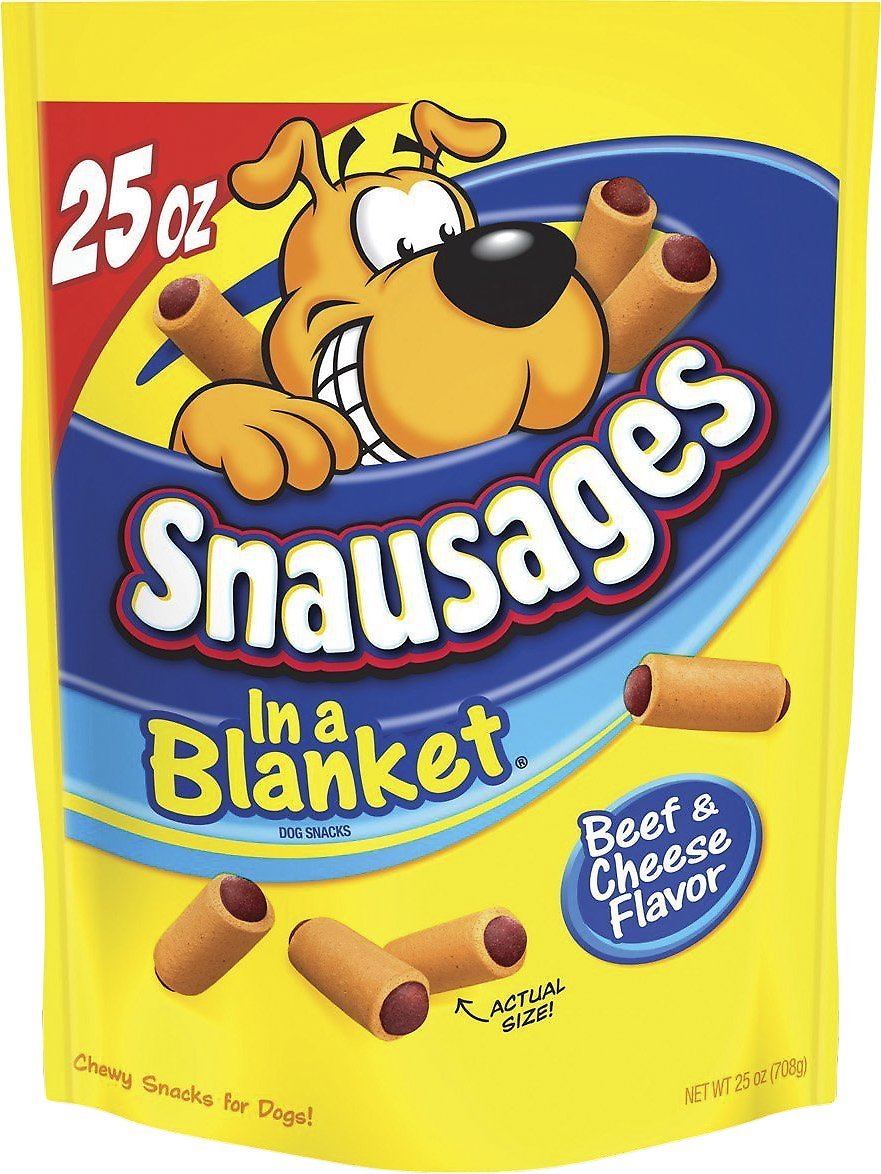It’s worth noting that in countries like US, it’s really only things like beyond burgers and impossible meat that cost more. It doesn’t require eating those for a plant-based diet nor are people typically eating those every meal, is why plant-based diets generally have lower costs
Compared to meat eaters, results show that “true” vegetarians do indeed report lower food expenditures
https://www.sciencedirect.com/science/article/abs/pii/S0921800915301488?via%3Dihub
It found that in high-income countries:
• Vegan diets were the most affordable and reduced food costs by up to one third.
• Vegetarian diets were a close second.
• Flexitarian diets with low amounts of meat and dairy reduced costs by 14%.
• By contrast, pescatarian diets increased costs by up to 2%.
https://www.ox.ac.uk/news/2021-11-11-sustainable-eating-cheaper-and-healthier-oxford-study
Oh yeah I 100% spend less on food as a vegetarian, because black beans/lentils are such wonderful cheap sources of protein.
But sometimes I want like the premade like meat crumbles or burgers, and those cost more usually.
But do you spend less because you’re vegetarian, or because you don’t have options for spending money at fast food / restaurants?
I mean a pound of beef costs $4.
A pound of raw lentils like a $1.
Lentils are more calorie dense.
Lentils are more protein dense.
Black beans are in similar camp.
Rice and wheat products are cheaper per calorie, but lack the protein.
So yeah, it’s just cheaper to be a vegetarian, even with massive beef subsidiaries. But veggie patties are still more expensive because of processing and they are smaller batches.
To add to this as a vegan of 10+ years. To supplement the lack of protein, I use pea based protein powder for a meal. And add hemp seeds for other meals/snacks during the day.
We occasionally get the processed grounds/meat substitutes only when they are on sale. Which would be 2lbs for $6 for a gardien/beyond/impossible alternative to animal flesh in pounds.
Unfortunately the difference between eating meat or lentils is having to eat lentils lol.
Lol, lentils are freaking bomb. Its a win win for me, I can eat bomb ass lentils, and save money.
I’ve always had issues with lentils but my diet is very Midwest American lol. The only time I’ve had good lentils is when they’re masked as much as possible in heavily spiced curries or similar.
Aren’t they already used in a bunch of processed foods as filler?
… okay you got me there.
But the veggie tech to make meat likes is getting better, so hopefully soon!
Yeah people really don’t believe me when I talk about how much I save by being a low fish pescatarian. A can of beans is cheaper than equivalent beef or chicken as are mushrooms. Peanut butter sandwiches are a cheaper lunch than lunch meat ones. And I’m not hurting for protein because beans are full of the stuff
I realy don’t get why people eat those meat subsidies. They are realy not that good and unhealthy too. Cooking a meal just with vegetables and other stuff can taste realy good, is healthy and cheap at the same time.
Probably because Americans were raised on a super meat heavy diet. Meat burgers. Meat casseroles. Meat sauces. Meat everything. Fake meats make those recipes achievable for vegetarians and vegans who long for mom’s home cooking.
This is only a recent thing historically. Government subsidies and lobbying from the meat industry, not to mention letting agricultural corporations create our food pyramid, got us to where we are today.
We have been led into an unhealthy lifestyle for the profit of a handful of billionaires.
Take a look at places where people live above 100 yrs regularly. They aren’t shoveling beef down there throats like Americans are. And we die 20 to 30 years earlier on average
Couldn’t be the lack of universal healthcare or other social services. Just meat.
Want to hear some mind-blowing information? Not everyone likes the stuff you like, you’re not the barometer on what is good or what is unhealthy.
You want the real reason in a thread jerking off vegetarianism? Here goes:
- Meat tastes great.
- It gives me a sense of fullness that plants rarely do (except beans).
- It’s a better protein source.
- The iron, B12, etc. in it are more easily absorbed.
- Every brand of fake meat I’ve tried tastes terrible.
- It makes me feel the best mentally compared to eating other foods.
Why is it that countries that don’t eat red meat as much as Americans live far longer than we do?
Okinawans live well past 100, and are doing physical activity into their 90s. Americans are falling apart by the time they turn 60, dead before they hit 80.
I hope the flavor is worth the colon cancer!
Not American myself, but I can think of a few factors besides meat:
- less stress
- less polution
- less processed food, be it meat or not
- less sugar
- less sedentary lifestyle
- genes
Nutrition alone won’t get you to 100. Having a diverse diet keeps ypu healty, but there are many factors that impact health. I do agree that meat is overused in general population, but can’t really force the vegan/vegetarian lifestyle onto an omnivore specie.
While moderation is the key to everything, and I wouldn’t be surprised if cutting out red.meat is a lot healthier for the consumer
Feels like you just randomly made something up here by comparing some random outlier stories you’ve heard.
Yes meat does that. I am talking about fake meat.
Impossible and beyond taste delicious in respective appropriate dishes. Dunno wtf you’re on about. Also a lot less prep and clean up to toss a frozen patty on the grill than cook a bunch of veggies. The downside is that it isn’t particularly healthy-- at least on par with a red meat burger. But the idea that they all “taste bad” is just dumb and contrary to what clearly a ton of other people experience.
They’re junk food and that’s why I love them.
It’s the same impulse that keeps me buying Takis.
Reminder that farmers can spend something like a dollar per cow per year to allow their cattle to roam through public lands to cause erosion, shit in streams, spread giardia, and give farmers reasons to kill coyotes and wolves.
Also a shame that cow farts emit a lot of methane.
They surpsingly release most methane through burping, not farting. Even more surprising is that they burp so much methane that it is
Edit: boost isn’t displaying links with custom titles. Here it is: https://www.cnn.com/2022/04/30/us/cow-burps-methane-space-climate-trnd/index.html
Thats crazy. We need cow filters on all the holes.
The solution to bovine methane emissions is to install a cowalitic converter inside their mufflers. Just like we do with quad udder milk exhaust collectors.
On a serious note i read a while back that they are looking into a type of gut bacteria to give to cows which will significantly reduce the methane produced by the cows digestive system.
Send it.
And how much more water goes into growing meat
This is mostly done in the western U.S. It also takes around 40 acres of land/cow. In drier areas it takes 200 acres per cow.
In an irrigated field, with annual crops, and rotational grazing, we can feed 2-4 cows/acre depending on the location.
We do not need to use 95% of the land we use for pasture.
While this is true, BLM land doesn’t exist everywhere and as such it isn’t true of all cattle farmers.
Here it’s not just that.
The raw resources and production costs of oat milk is like, €0.30 per 2 liter.
They sell it at €2.40.
Healthy is capitalism here.
Doesn’t production of not milk use a ton of water and have am environmental impact
One of the trends I have noticed with vegan users online is that they neglect to mention the environmental impacts of their own alternative products
I believe they also put a lot of resources into research
Oat milk is just oats blended in water. The research is minimal. The marketing is where they put most of their money.
Jokes on them, I’ll still only refer to it as oatmeal
Most retail nut milk is actually mixed with a variety of gums and other texture enhancers.
Fresh, homemade oat milk is actually really easy to make by that process, but store-bought oat milk needs to have consistent flavor and texture/mouth-feel. So there is a bit more that goes into it.
This is also true of other non-dairy milks. That’s why I only use Trader Joe’s or Westsoy shelf-stable soy milk for making yogurt. No gums.
I think there is a huge difference in the thing you are describing and e.g the oatly barista.
There are a lot of oat milks that taste very different or not at all. To get the right taste and consistency, you need some research.
You’re the only one talking about niche/specialty products though. Not denying that those products require extensive research, but I doubt that those products alone are responsible for the considerable markup on the typical alternative milk products, which truly are closer to “oats blended in water”, and probably make up a majority of sales.
Plus vegans will pay anything in order to imagine themselves as being better than meat eaters.
I don’t think this is the case. Vegans are likely to spend less money on food.
If you learn how to make your own patties from scratch it’s pretty cheap - or to save time you can do what I do and eat beans directly from the air fryer 🤤
oh damn I have an air fryer
recipe?
I actually just rinse off canned beans, spray them with vegetable oil, toss em in at 400F for 8-12 minutes, then shake them in a baggie with salt and spices. Or mix them in a bowl with hot sauce. Or use them as a topping for rice. Or throw them in stir fry. Or sauteed onions and bell peppers, then put them on tortillas.
God damn I love air fried beans
neat, thanks! I will try this
What kinda beans tho?
All kinds!
Airfried garbanzo beans are great as a salty snack (generally I like to use a sweet chili seasoning) or sauteed with onions and peppers and fajita seasoning and then served on soft tortillas. Airfried pintos are great as a salty snack (chili lime or nooche is best for them) or sauteed with corn and onions and taco seasoning, and then topped with fresh tomato and lettuce and put on crunchy tortillas. Airfried black beans are great as a salty snack (just straight with salt and pepper) or just drenched in hot sauce and eat em with a spoon.
I wasted so much of my life thinking I didn’t like beans because I’d only ever had nasty baked beans from school lunches. 😞
Mouthwatering!
Holy shit TIL, thanks
Corn farmers have entered the chat
Sorry corn farmers, this is about people food. Growing fuel doesn’t really count.
Growing corn that is only usable as animal feed counts as part of how beef industry is being propped up by the government.
So yeah… I think only one or two corn farmers will be left in the chat after that.
I think they were referring to corn subsidies
They’re all referring to corn subsidies.
If you grow corn with subsidy and then sell that corn as livestock feed to cows, then you’ve indirectly further subsidized beef.
Though… this viewpoint is partly misleading people. Corn stalks and pith which humans can’t eat and need ruminant animals to process is what gets fed to them. We don’t always feed corn kernels to cows en masse, though many farms do. If they can find a buyer for the kernel for other consumption (human, fructose syrup, etc), they will sell it that way as it is more profitable. So even if it wasn’t subsidized and we only produce high priced corn for humans, we’d still feed the stalks and pith to cows.
Correct, but the vast majority of corn subsidies are to grow corn not meant for humans to eat. They are to grow animal feed, or ethanol.
So the first category I count as subsidizing the meat industry, since it exists purely to make raising live stock cheaper. The second category doesn’t really impact food.
Never say America can’t afford to feed its people. It can, it just prefers to prop up failing and immoral industry instead.
It can afford to feed rich people.
It can afford to feed rich people. Exactly.
Feeding and eating well are two different things.
Depends. If you are eating non processed vegetables the costs goes way below even burgers.
Oh yeah for sure! Just sometimes I wanna go to a place and order a similar looking thing as the people around me without paying a ton more XD
And beans. And lentils. And peas.
Also, opting for the burger options doesn’t have to mean eating a huge quantity of them.
Oh man, staple crops are subsidized waaaaaayyy more heavily than beef. Some of this grain goes to the beef industry as feed, so it is indirectly supported by taxes. But the reality is that the soy, barley, beans, or whatever else is in that veggie burger are subsidized directly and more extensively.
Where in the WORLD did you hear that bit of propaganda?
https://agriculturefairnessalliance.org/news/2020-farm-subsidies/
https://www.aier.org/article/the-true-cost-of-a-hamburger/
I can’t even find any source saying more money is spent on any crop than on beef. It seems like it’s totally made up. The numbers vary because it’s hard to pin down, but I can’t find a source saying anything besides “most subsidiaries go towards beef and dairy”
… The very first link you provided shows a chart that has more assistance going to corn than beef, more going to soy than dairy and more going to wheat then pigs.
https://agriculturefairnessalliance.org/wp-content/uploads/2021/04/2020bdcat-1320x743.png
???
I think you should read more carefully what that chart is showing.
Corn for example is purple and gray mostly.
Purple = live stock feed gray = biodiesel
Soy is mostly purple, so most of it goes towards feeding live stock.
So most of the subsidiary is just being spent to make it cheaper to raise live stock.
Just wanna point out that it’s “biodiesel and Industry” specifically because ethanol is added to almost all gas and more.
Ethanol is trashing engines and producing more waste via dead engines, all while providing jack shit for actual cleaner energy. The corn lobby landed ethanol requirements and it’s never going away now that they’ve found that revenue stream.
Also grains are subsidized to support the beef industry because feeding beef beef byproduct had predictable results.
I don’t want to speak for them, but one can interpret crops subsidized for the purposes of livestock feed AS a subsidy for livestock. If you look at the sum of the purple sections (livestock and feed), it’s the largest.
But you are right: buddy’s own chart does show a larger direct subsidy for corn than direct subsidy for beef.
You are correct, because barely any actually goes to corn we eat. Those subsidies exist just to make it cheaper to raise live stock. So while direct subsidies are higher for corn, it’s so high purely to help raise live stock. Just because we “can” eat corn doesn’t really impact the fact that we aren’t, it’s mostly live stock eating the corn the subsidies are paying for (And biofuel)
Yup, here in Iowa the vast, vast majority of corn is known as “cattle corn”, and as described it’s used for cattle (and biodiesel, and pigs). Most farmers only grow sweetcorn “for fun”, as a side thing compared to the huge subsidies for cattle corn.
Pigs and chickens don’t eat air, you know.
70% of US soy becomes animal feed. Some of the rest is used industrially, or becomes biodisel. Relatively little US soy becomes soy sauce, tofu, etc.
Soy subsidies, in practice, mostly function as a chicken and pork subsidy.
You’ll notice that we heavily subsidize animal feed crops like corn and soy, and spend much less money subsidizing fruits and veggies, nuts, and other legumes like black beans or lentils.
Soy subsidies, in practice, mostly function as a chicken and pork subsidy.
i think there’s a case to be made that it’s actually a corn subsidy more than chicken or pork.
70% of US soy becomes animal feed.
almost all soy is pressed for oil. the industrial waste from that process is the vast majority of what is fed to animals.
Many of those types of crops used for feed aren’t really aligned all that well. Corn for instance isn’t going used so heavily in a plant-based diet as it is subsidized (corn is the most subsidized crop in the US). There is also separate food-grade and feed-grade soybeans. 90% of US soy production is going to feed (and not to mention a good portion of the other 10% is going to soybean oil which is not super helpful for a plant-based meat)
90% of U.S. soybeans produced are used as a high-quality protein source for animal feed
https://soygrowers.com/key-issues-initiatives/key-issues/other/animal-ag/
Further, they are still getting massive amounts of direct subsidies
The Department of Agriculture has spent almost $50 billion in subsidies for livestock operators since 1995, according to an EWG analysis.
By contrast, since 2018 the USDA has spent less than $30 million to support plant-based and other alternative proteins that may produce fewer greenhouse gases and may require less land than livestock.
Also worth mentioning that beans are not particularly highly subsidized unless you are counting soybeans mentioned earlier.
Beef is more nutritious though.
So giving subsidies for that means more people can afford good nutritious food.
I read that veggie burgers/ processed vegetarian foods have more human DNA in them than traditional options. Plus beef is delicious and nutritious.
If you knead bread by hand, it’ll have some human DNA in it from e.g your skin cells. It’s almost impossible to cook or process food while preventing it from getting literally any human cells into it, because humans are shedding cells and DNA literally all the time. You can wear gloves, hairnets, and frequently mop up, but eliminating the problem entirely is hard.
Both a vegetarian burger and a beef burger are probably going to have more human DNA in it than either a steak or a pot of black beans would.
deleted by creator
May as well not considering willful complicity in their deaths is wrong.
Oh well yes.
If it wasn’t obvious I’m a raging vegetarian. Just annoying.
Yes I could stop eating a pound a day but keto and vegetarian don’t mix well
Why is vegan lingo so infantile? Veggies. You can cram you veggies up your asshole. I’m having a burger.
Tons of people say veggies. Including meat eaters.
Really? That’s the angle you’re going for? Lmao you’re offended by the word “veggies”, a word nearly universally used by nearly every English speaker? Uh oh, looks like your fragile masculinity is showing
Don’t give a fuck. Tax the rich, then we can worry about what I eat.
Veganism is class warfare.
I don’t think you understand what class warfare is.
The fact that it’s co-opted by rich people as trying to convince you that environmental disasters they cause is your problem doesn’t change any points made by actual vegans, or the fact that it’s far far cheaper. Even with all the subsidies given out, a pound of black beans/lentils has more calories/protein than a pound of beef, and will cost 1/5 the price. Sure if I want to splurge and buy a premade veggie burger it’s more expensive, but generally it’s just way more affordable.
I think you’re ignoring the general capacity for vegans to maintain nutritionally complete diets without supplements.
And last time I checked, the rich don’t concern themselves with the cost of nutrition. You’re so deep in the class warfare you can’t even see the front lines.
B12 is the only thing, and we can buy food that reinforced with it so no big deal. Many cereals have it added, and this can not be overstated, it’s the only thing that is problematic for vegans naturally. I’m not even a vegan, but B12 is added to all sorts of foods these days.
Also if that’s the case, then eating meat is class warfare. While people are starving, we are growing food to feed to live stock, to get a food people think tastes better. For every 1000 calories of food fed to cattle, you’ll get less than 100 calories of meat. There is not enough land on the planet for every person to eat meat the way folks in the US do.
https://www.globalagriculture.org/report-topics/meat-and-animal-feed.html#:~:text=Nearly 60%25 of the world’s,kilometres of land to produce. "Nearly 60% of the world’s agricultural land is used for beef production, yet beef accounts for less than 2% of the calories that are consumed throughout the world. "
That 60% is counting all the corn and soy agriculture that is fed straight to beef. The world is not big enough for humans to eat as much as meat as people do. As a delicacy? Sure. But eating it every day? Multiple meals? Part of the world will always starve if we do. There is nothing in meat that we can’t get in other ways, not a single thing. So in all honesty if we want a stable world, we will need to figure out our addiction to meat.
That’s a lot of words to miss the point.
Also, choline. Also, numerous micronutrients. Also, nutrient density and bioavailability. Also, non-arable grazing land makes up a large part of that 60% (see Australia). Also, locally sustainable nutrient complete. Also, not subject to needing supplementation from foods only available due to international commerce. Also, where do you think they grow the crops for extracting nutrients for supplements? Also, meat is the battery mass storage of the food world, you can charge it up, it’s portable, easy to keep, won’t spoil until harvested.
But go on, tell me again how the poor have access to nutrition and that it’s not class warfare. Starvation must suck on a full stomach.
Literally every single thing you said is just factually wrong.
Choline is bountiful and not a concern https://www.pcrm.org/news/blog/clearing-choline-confusion. “Micronutrients” I’d love to know which ones. B12 also is in some vegetables, but vegetarians/vegans like to take the supplements just because it’s the only one they “might” not get enough of.
Most of that 60% is used for growing corn and soy used to feed live stock, because letting them graze is inefficient. The vast majority of animals butchered for meat are from factory farms, which are powered by corn and soy. Which could have just been human grown soy and sweetcorn, but instead it makes more money to grow cattle grade. https://www.sentienceinstitute.org/us-factory-farming-estimates
Also they don’t just keep fully grown beef cattle sitting around my friend. They slaughter them on a tight schedule to maximize profit. They don’t function as batteries, they are treated as crops in factories where they are born and die on an optimal schedule. Keeping around a full grown cow marked for beef is a GIANT waste of money, because it needs food, water, and housing despite not going to grow much bigger.
https://www.ams.usda.gov/grades-standards/slaughter-cattle-grades-and-standards
And if meat is the food storage of the world how is it a measly 2% of calories consumed? It feeds next to no one. If it vanished, people would moan and grown, but basically no one would go hungry because it feeds just SO few people on the grand scheme of thing. In fact, if all cows vanished, we’d have vastly more food as the vast amounts of corn, grain, and soy that were going to be fed to cows at a 10:1 return would be sold to people, and instead of growing feed corn the next harvest would be food humans actually like.
I just can not stress enough that they eat 20X as many calories, most of which was grown in fields that could have been from humans, as they provide when eaten. The idea that they are grazing, just simply isn’t true. Letting them graze is an inefficient use of land. https://cbey.yale.edu/our-stories/disrupting-meat
Not to mention you complain that it’s only available due to international commerce… yet many countries import meat as well. https://beef2live.com/story-world-beef-imports-ranking-countries-0-106900#:~:text=China accounts for roughly 30,South Korea and Hong Kong.
You’re right, it is class warfare, rich countries should stop eating meat and instead focus fields on crops that are 20X more efficient until everyone has more food than they can possibly eat. https://www.arktide.org/how-much-food-can-we-grow/#:~:text=On land%2C soybeans can produce,18 million calories per acre.
I’d be down for pescatarians though if we actually got around to taking care of the oceans and doing sustainable farming.
If you can’t provide sources in a response I will just have to ignore as a troll though. Because every point you made was just… factually incorrect. I’m hoping you just heard those things somewhere else and repeated them without checking and didn’t make them up to be a bother.
Choline is bountiful and not a concern “Micronutrients” I’d love to know which ones
It’s been common knowledge for decades that maintaining a nutritionally balanced vegan or vegetarian diet is not as simple as just eliminating meat as doing so causes a severe lack of several key nutrients and vitamins. The main offenders are vitamin B12, Omega 3, vitamin D, Zinc, and Choline. Some of these can be accounted for by increasing variety in the diet but others require supplements for a multitude of reasons, either recommended daily consumption cannot be met due to self imposed dietary restrictions, a lack of nutritionally rich sources, or simply how much food you can eat.
https://www.ncbi.nlm.nih.gov/pmc/articles/PMC8746448/
https://www.ncbi.nlm.nih.gov/pmc/articles/PMC7073751/
https://www.sciencedirect.com/science/article/pii/S0261561420306567
https://www.mdpi.com/2072-6643/15/9/2129Nutritional deficiencies caused by incorrectly managed vegan diets are why doctors in Italy and Belgium are pushing for it to become illegal to feed children vegan diets, because the number of malnourished and dead children of vegan parents are rising in those nations.
https://www.bbc.com/news/world-europe-37034619
https://www.telegraph.co.uk/news/2019/05/16/parents-raise-children-vegans-should-prosecuted-say-belgian/Choline is a nutrient that was identified in the 1800’s but wasn’t known as essential to human development until the late 90’s, it’s found primarily in animal protein and severely impacts brain development in young children and has ongoing effects on mental capability and brain function during adulthood and deficiencies have been linked to multiple memory related diseases. According to nutritional data from the US National Institute of Health on Choline density in foods a vegan would have to consume two and a half cups of soybeans every day to meet minimum RDI for an adult as opposed to 300g of animal protein. The next nearest vegan source of choline is chickpeas which have 50% lower Choline density than soybeans (5 cups a day to meet RDI!)
https://www.ncbi.nlm.nih.gov/pmc/articles/PMC4422379/
https://ods.od.nih.gov/factsheets/Choline-HealthProfessional/And if meat is the food storage of the world how is it a measly 2% of calories consumed?
Source? Are those numbers including livestock consumption of non-meat products? Pet consumption of meat products? You bitch about not sourcing information when none were requested then drop that bullshit with no source?
I just can not stress enough that they eat 20X as many calories that could have been from humans.
Whole soy beans make up less than 6% of an American production cow’s diet, they can’t handle more, the rest is made up from industrial food waste such as soybean meal from soymilk production, beet pulp from sugar production, cotton seeds from clothes production, brewers grains from alcohol production, citrus pulp from fruit production, corn gluten from corn syrup production, candy and bakery waste. Numbers from non waste food consumption in cows is as low as 2-3%.
https://en.wikipedia.org/wiki/Cattle_feeding
https://nre.tas.gov.au/Documents/cattlefeed.pdfThe idea that they are grazing, just simply isn’t true. Letting them graze is an inefficient use of land.
https://www.agriculture.gov.au/sites/default/files/sitecollectiondocuments/natural-resources/soils/national-factsheet-farm-practices-grazing.pdf
https://www.redmeatgreenfacts.com.au/environment/land-use/land-use-faqs/just-3-of-australias-land-mass-is-suitable-for-cropping/
https://wwf.org.au/what-we-do/food/beef/
https://www.csiro.au/en/work-with-us/industries/agriculture/sustainable-food-and-agriculture-systems/understanding-and-navigating-global-change-in-our-food-systems/grazing-systems-in-sustainable-food-futures
https://www.climateworkscentre.org/land-use-futures/australias-land-use/
http://era.daf.qld.gov.au/id/eprint/4249/
https://landcareaustralia.org.au/landcarefarming/innovationsinag/regenerativerangelands/
https://www.agric.wa.gov.au/dry-seasons-and-drought/grazing-native-vegetation-and-revegetation-farms-–-western-australia
https://www.ari.vic.gov.au/__data/assets/pdf_file/0021/36084/ARI-Technical-Report-252-Understanding-the-relationship-between-grazing-and-wetland-condition.pdfNot to mention you complain that it’s only available due to international commerce… yet many countries import meat as well
Which has higher caloric density and thus is more environmentally sustainable than transporting the same nutritional value in produce. It’s like you want to burn more fossil fuels in the shipping industry than necessary.
You’re right, it is class warfare, rich countries should stop eating meat and instead focus fields on crops that are 20X more efficient until everyone has more food than they can possibly eat.
Crop management, pesticides, and harvesting kill far more animals of varying species for the same equivalent nutritional value of a single head of cattle. Animals are also often raised on land that can’t be used for crops turning useless land into sustainable food resources, here in Australia over 70% of all our cattle are grass fed on non-arable land that can’t be used for farming crops and that soil health requires both crop rotation and animal biodiversity otherwise you’re not going to be able to grow vegetables there for long. The only reason a healthy nutritionally balanced vegan or vegetarian diet is even remotely possible is due to globalised trade and access to internationally produced and shipped vegetables. To maintain a nutritionally complete vegan diet for an individual year round actually requires far more use of fossil fuels and directly released carbon emissions due to limited seasonality and local accessibility than a cow produces for the same nutrient density and complexity locally.
Here’s a “fun” fact, first world demand for fruit and grain variety has out priced primary sources of food for local populations in third world countries including things like lentils, quinoa, and avocados.
https://www.sbs.com.au/news/insight/ordering-the-vegetarian-meal-there-s-more-animal-blood-on-your-hands
https://www.independent.co.uk/life-style/food-and-drink/veganism-environment-veganuary-friendly-food-diet-damage-hodmedods-protein-crops-jack-monroe-a8177541.html
https://www.theguardian.com/commentisfree/2013/jan/16/vegans-stomach-unpalatable-truth-quinoa
https://thetab.com/uk/2020/02/12/tofu-vegan-food-staple-bad-for-the-earth-143688?fbclid=IwAR1aBfNlh_OPSrF8odvUf6O5X14zE_VbCdXrn-a87AGip2zhXsohzMnNcHkIf you can’t provide sources in a response I will just have to ignore as a troll though. Because every point you made was just… factually incorrect. I’m hoping you just heard those things somewhere else and repeated them without checking and didn’t make them up to be a bother.
If self-awareness was a disease, you’d be the healthiest person alive.
TIL i’m dead
Not arguing with you, but I wanted to contribute by saying that most people, at least in the US, are also deficient in magnesium, zinc, and vitamin D. For all this effort carnivores are putting into to convince others that their diets are sufficient, often times those making those claims haven’t looked inward to see what they themselves are lacking. Perhaps it’s a complex issue, dunno
deleted by creator
That is a wonderful point!
I actually ran into someone with big conspiracy energy at a food expo the other day, and he like started ranting about how the government has proven that it’s more interested in promoting what food pays the most in lobbying over actually caring about our health and it’s like… bro you are channeling some major conspiracy theory vibes but I can’t at all argue with your point. Between the food pyramid being drawn up by farmer lobbyists, corn syrup being put into everything despite it poisoning the lower class, and corps only getting a slap on the wrist when they make false food claims… it’s pretty obvious the government isn’t super concerned with our actual well being with our diets and we should all make sure to look inward.
Or vegans are more affluent and locked in so the take what they can get.
Americans earning less than $30,000 annually are more likely to identify as vegetarian. Nine percent of this group say they are vegetarian, a higher percentage than is true of Americans in the two higher-income groups. Differences in levels of veganism among these three groups are not statistically significant.
That’s me, involuntarily vegetarian, inveg?
When the people shall have nothing more to eat, they shall
eat the richbecome inveg
So it’s just.abuse of the limited options for vegans. Sounds like a new burger chain in the making that offers same prices for everybody.
No, it’s the first one.














